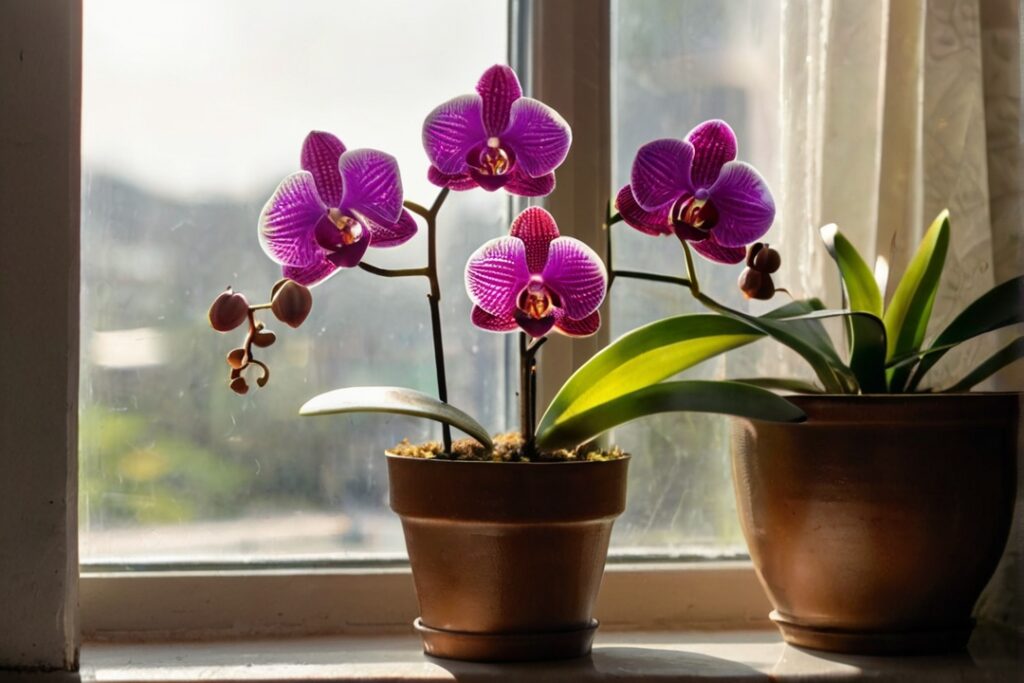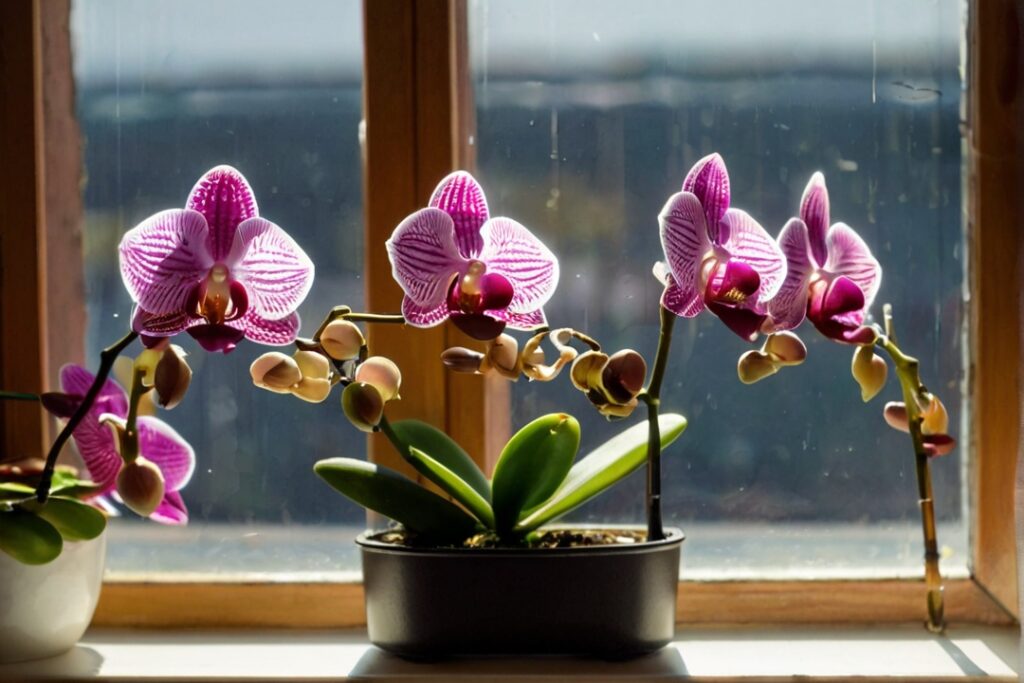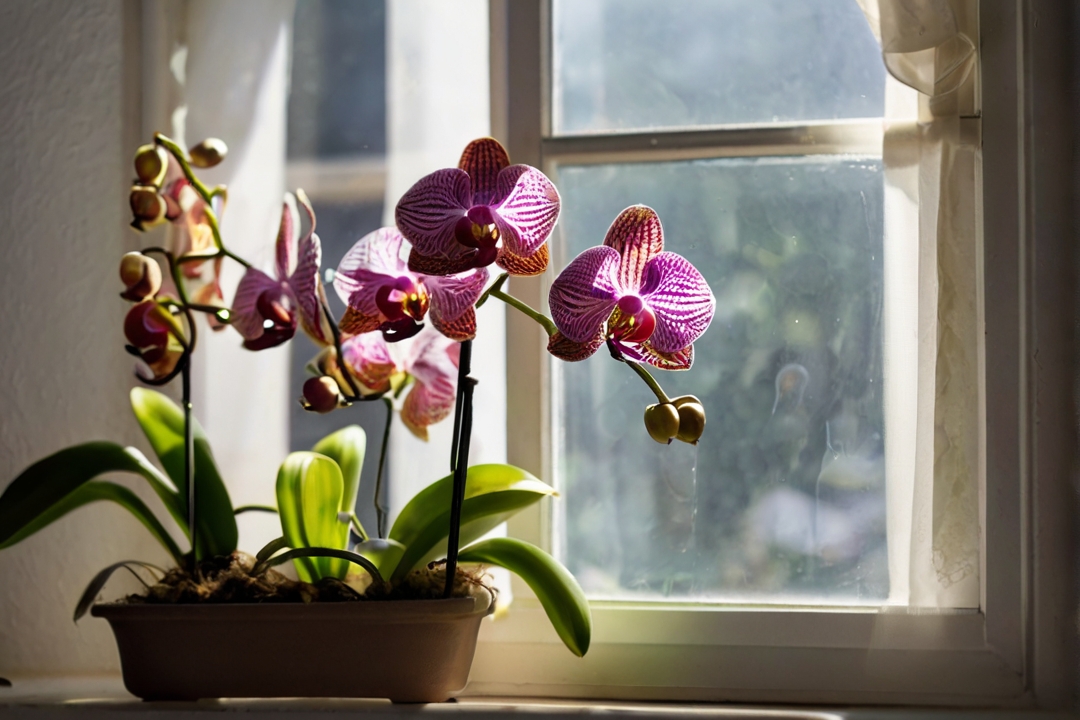Quick Answer
Yes, orchids need sunlight to thrive, but the amount varies depending on the species. Generally, they require bright, indirect sunlight. High light orchids like Dendrobiums and Cattleyas need direct sunlight for several hours daily, while medium light orchids such as Phalaenopsis thrive in bright, indirect sunlight. Low light orchids like Paphiopedilums prefer shaded conditions with minimal direct sunlight. Understanding and meeting their specific sunlight needs is crucial for healthy growth and blooming. Read on to get an in-depth answer to the question: Do Orchids Need Sunlight?
Table of Contents
Orchids are among the most beautiful and diverse plant families, with over 25,000 species and more than 100,000 hybrids. Their unique needs and stunning blooms make them a favorite among plant enthusiasts. One of the key aspects of caring for orchids is understanding their sunlight requirements, which can vary significantly among the different types. In this article, we will explore how to meet the sunlight needs of various orchid species, ensuring they not only survive but thrive in your care.
Understanding Orchids’ Sunlight Needs

General Sunlight Requirements for Orchids
Orchids generally require bright, indirect sunlight to flourish. Direct sunlight can often be too harsh and lead to leaf burn, whereas too little light can prevent them from blooming. A balance is essential, with the amount of light varying depending on the orchid’s natural habitat and specific species.
Factors Influencing Orchids’ Sunlight Needs
- Natural Habitat: Orchids are found in diverse environments, from tropical rainforests to dry, rocky areas. Their native habitat greatly influences their light requirements.
- Seasonal Variations: The amount of light and its intensity change with the seasons, affecting how orchids absorb sunlight.
- Orchid Species and Hybrids: Different orchids have evolved to thrive under specific light conditions, making it crucial to understand the needs of your particular species or hybrid.
Types of Orchids Based on Sunlight Needs

High Light Orchids
- Examples: Dendrobiums, Cattleyas, Vandas
- Characteristics: These orchids need direct sunlight for several hours daily to bloom.
- Ideal Placement: A south or west-facing window where they can bask in ample sunlight is perfect.
Medium Light Orchids
- Examples: Phalaenopsis, Oncidiums, Miltonias
- Characteristics: They thrive in bright, indirect sunlight, avoiding the intense midday sun.
- Ideal Placement: East-facing windows or partially shaded south/west-facing windows offer the ideal light conditions.
Low Light Orchids
- Examples: Paphiopedilums, Masdevallias, Phragmipediums
- Characteristics: These species prefer shaded conditions with minimal direct sunlight.
- Ideal Placement: North-facing windows or areas with filtered light, such as behind a sheer curtain, are suitable.
Adapting Sunlight Conditions for Orchids
Assessing Your Home’s Lighting Conditions
Understanding the light dynamics in your home is crucial. Monitor how sunlight enters through windows and how its intensity changes throughout the day and year.
Providing Supplementary Lighting
When natural sunlight is insufficient, especially in winter, consider using grow lights. LED or fluorescent grow lights can supplement the lack of natural sunlight, mimicking the orchid’s natural environment.
Rotating Orchids
Regularly rotating your orchids can ensure they receive even light exposure, preventing one-sided growth and promoting healthy development.
Tips for Sunlight Management and Care
Monitoring Orchids’ Response to Sunlight
Observe your orchids closely for signs of too much or too little light, such as leaf color changes or lack of blooming, and adjust their position accordingly.
Preventing Sunburn and Heat Stress
During peak sunlight hours, protect your orchids from direct sun exposure to prevent leaf burn and heat stress, which can be detrimental.
Adjusting Sunlight Exposure During Different Seasons
Be mindful of the changing seasons and adjust the placement of your orchids or the intensity of artificial lighting to ensure they continue to receive the optimal amount of light year-round.
By understanding and catering to the specific sunlight needs of your orchids, you can create the ideal environment for them to flourish. Whether you’re nurturing high, medium, or low light orchids, the right balance of light can make all the difference in achieving vibrant blooms and healthy growth.

